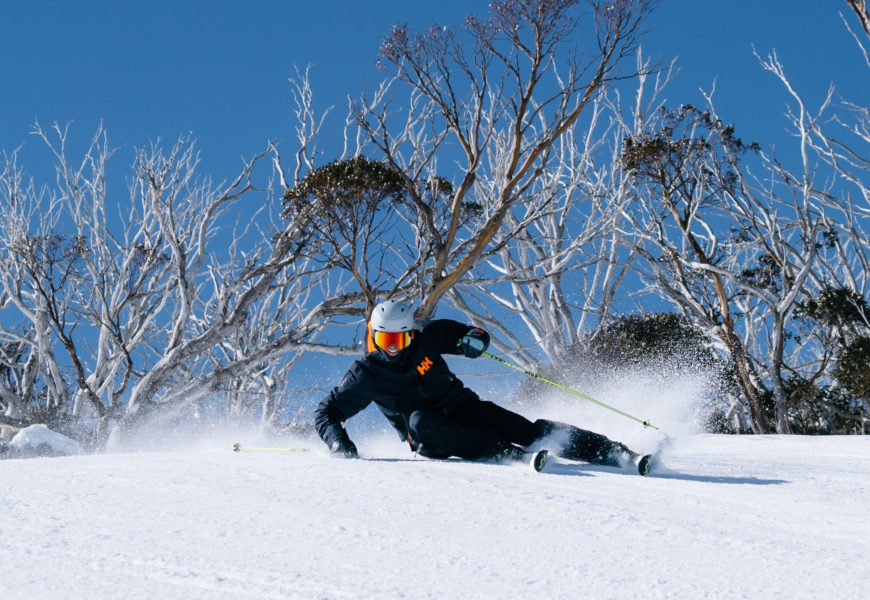How To Ski With Flow

Votes:
Have you ever watched a skier carving down a slope and thought they look incredibly smooth and fluid? By focusing on a few key aspects of your technique, you too can find effortless skiing that will get you flowing down the slopes and maybe even turning a few heads on the chairlift.
Smoothness in skiing is something that every level of skier can work on. For beginner skiers, it can be hard to find consistency and rhythm in your skiing. And for expert skiers, who often aren’t sure what to work on, you can always improve your skiing flow. Read on to get my top tips for smoother skiing.
The Key: Active Mobility
For me, smoother skiing comes down to stance and balance; how my ankles, knees, and hips work together. You can think of it as a production line - if one section is not actively working with the others, then the whole production might collapse. It’s the same with skiing:
If you ski with rigid joints which are locked in place, it quickly becomes difficult to maintain a stable balance, absorb changes in terrain, and, ultimately, ski with flow. A smooth skier, in comparison, is flexible and lets their ankles, knees and hips work actively together.
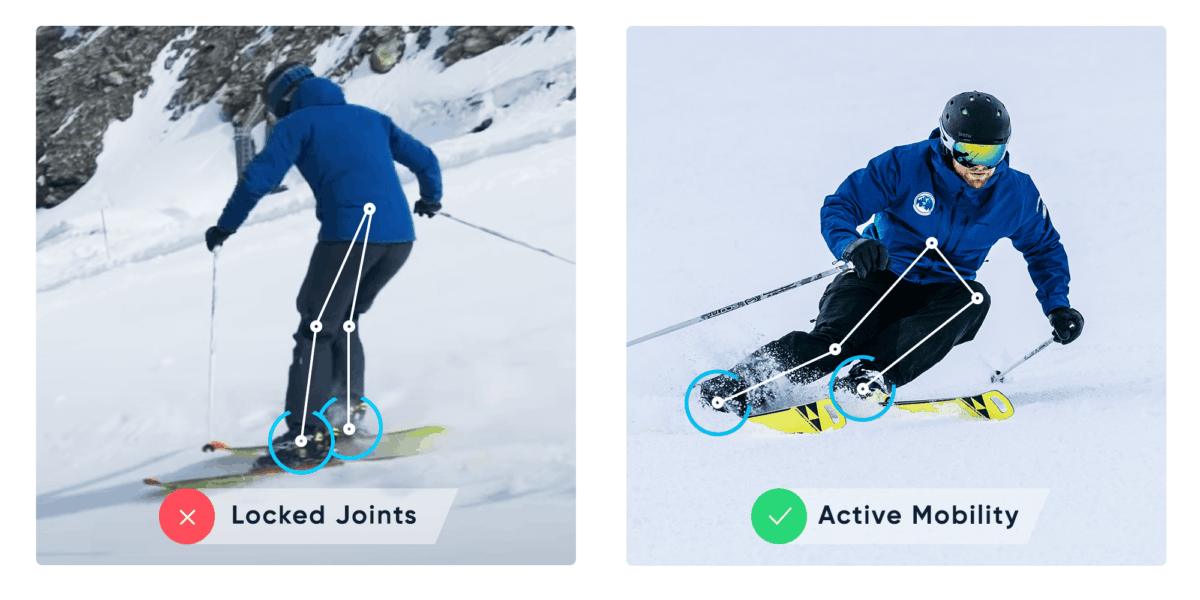
Feel your joints actively working together as you ski
Tip 1: Turn Shape
Skiing with flow is all about the rhythm of your turns. And the best way to visualize your skiing rhythm is by looking at the tracks you leave behind in the snow. What shape are your turns?
To ski with greater smoothness, the goal is to stop making abrupt Z-shaped turns, where you are locked in your joints, and to instead focus on making smooth C-shaped turns, where you progressively load the turn and let all your joints work actively together.
To explain this tip I like to use the best whiteboard in the world - snow!

Leaving behind C-shaped tracks in the snow is an indication of smoother skiing
To move from Z-shaped to C-shaped turns, imagine you’re driving a car. You wouldn’t wrench the steering wheel in one sudden movement to turn immediately round a corner. Instead, you’re more likely to gradually turn the steering wheel to find your way smoothly around the corner.
And don’t forget our key! Turning with the joints working actively together will help you make a smooth C-shaped turn, and keep you balanced over your skis.

Tip 2: Shorten the Inside Leg
For our second tip, we want to think a little outside the box. Usually, everyone talks about keeping your weight on the outside (downhill) ski. But today we want to focus on the inside (uphill) ski. If we can retract the inside ski so that it’s out of the way, we can get more pressure onto our downhill leg and find more grip.
The key to this tip is focusing on how you move your inside leg out of the way. It can feel easier to use a lateral movement to move your inside ski away from your outside ski. But when we’re skiing (particularly advanced skiers), our body is leaning at an angle, so a lateral movement would push our inside ski into the snow. Instead, we want to focus on an active vertical movement, so lifting your inside ski up out of the way.
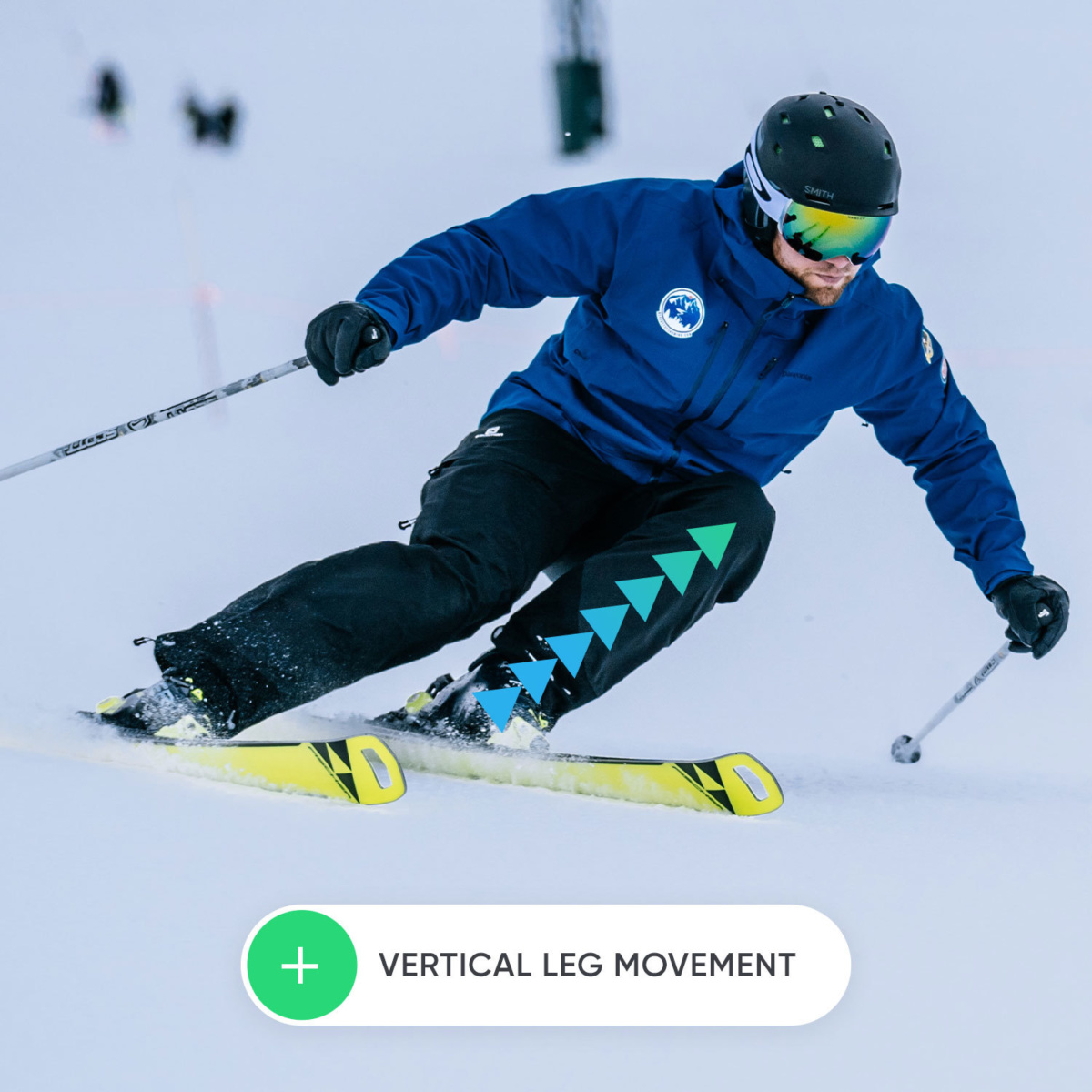
Retracting the inside leg should be a vertical movement, not a lateral movement
As always, we want to make these movements nice and smooth. So set yourself up so that you’re mobile in your joints, and as you transition into a new turn, slowly soften your inside leg and retract it. You should feel pressure gradually build on your outside ski. Imagine you’re riding a bike; as one leg pushes down, the other comes up!
Tip 3: Track Your Progress
When I work on smoothness in my own skiing it’s sometimes really hard to tell how a run went, as I cannot look at myself (and I don’t always ski with a professional filmer!).
With Carv, I can measure my Edge Smoothness, a metric that looks at how smoothly I can turn my ski onto the edge, and roll onto my other edge. At the end of each run, Carv gives me an Edge Smoothness score out of 100.
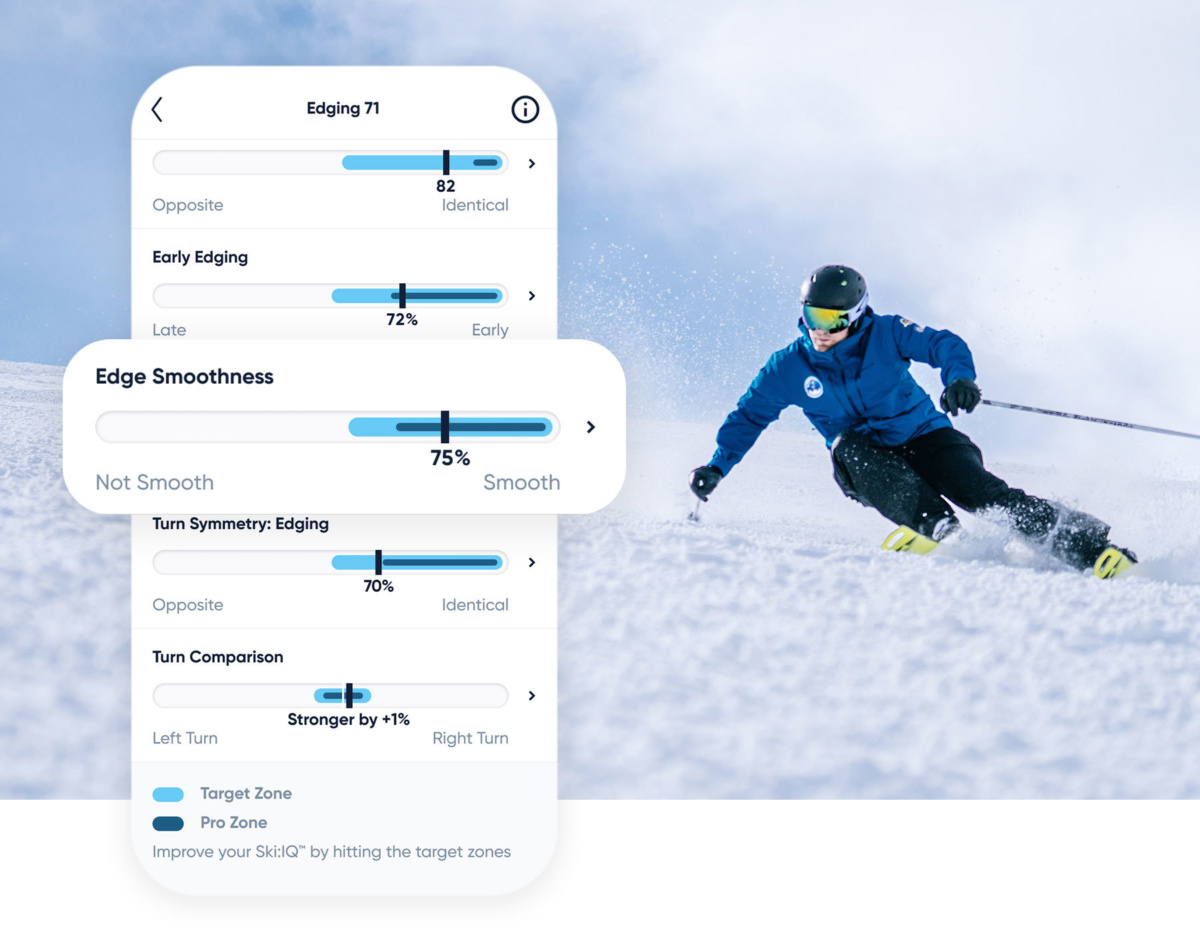
Carv's Edge Smoothness score is one of many metrics used to calculate your overall Ski:IQ™
While I was demonstrating those really odd Z-shaped turns earlier, my edge smoothness score was relatively low. But when I ski nice and smoothly, using all my joints and focusing on making C-shaped turns, I got a much higher score (see above) and therefore I know that my edge smoothness is much better.
This is a really cool way of getting an outside reference point for your own personal skiing.
Carv Balance Training
Use your digital ski coach in combination with these tips to become the smoothest skier on the piste.
1. Try Balance Training to finesse your active mobility and fine-tune your athletic stance.
2. Find your flow with the Metronome Challenge by skiing to the beat for as long as possible.
3. Use the Outside Ski Pressure Monitor to assess how well you're vertically lifting your inside ski out of the way, and allowing the outside ski to take more pressure.
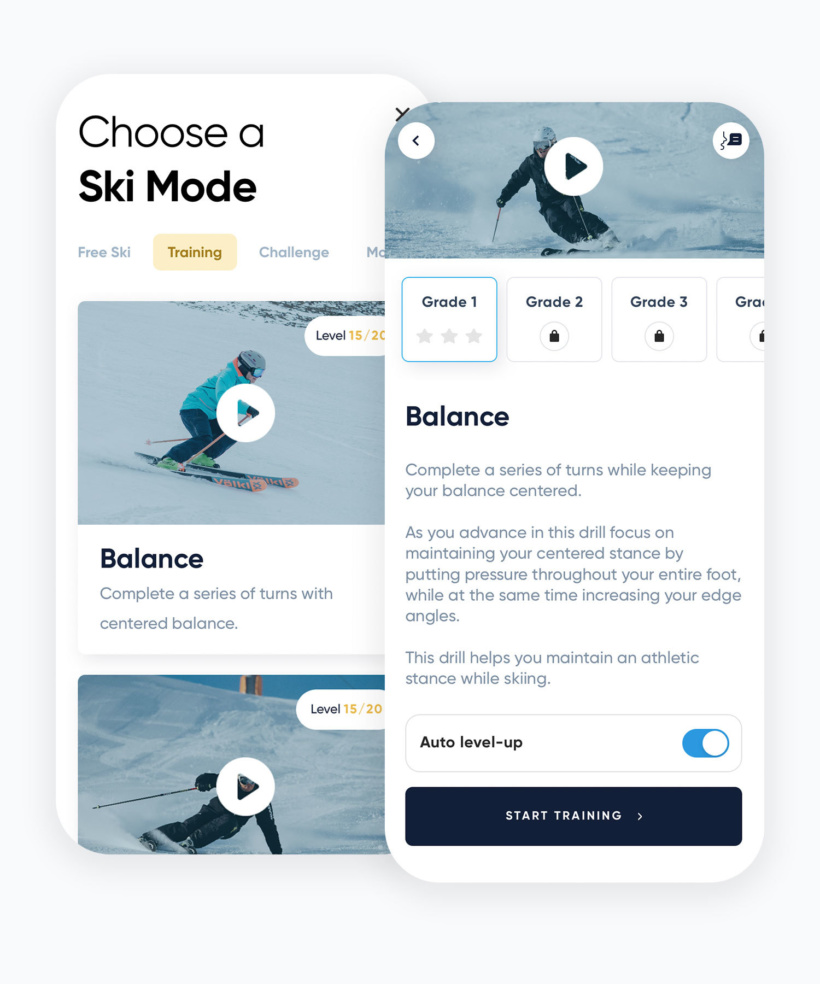

Written by: Christian Aigner
CSIA Level 4, Austrian Full Cert. Ski Instructor and Ski Guide
A bit about me: Growing up in a ski resort in Austria, I’ve been skiing all my life and have always loved it. After finishing my Bachelors of Education I decided to teach skiing full time. My certifications are CSIA level 4 and Austria full cert and ski guide. Hope to see you on snow soon!

